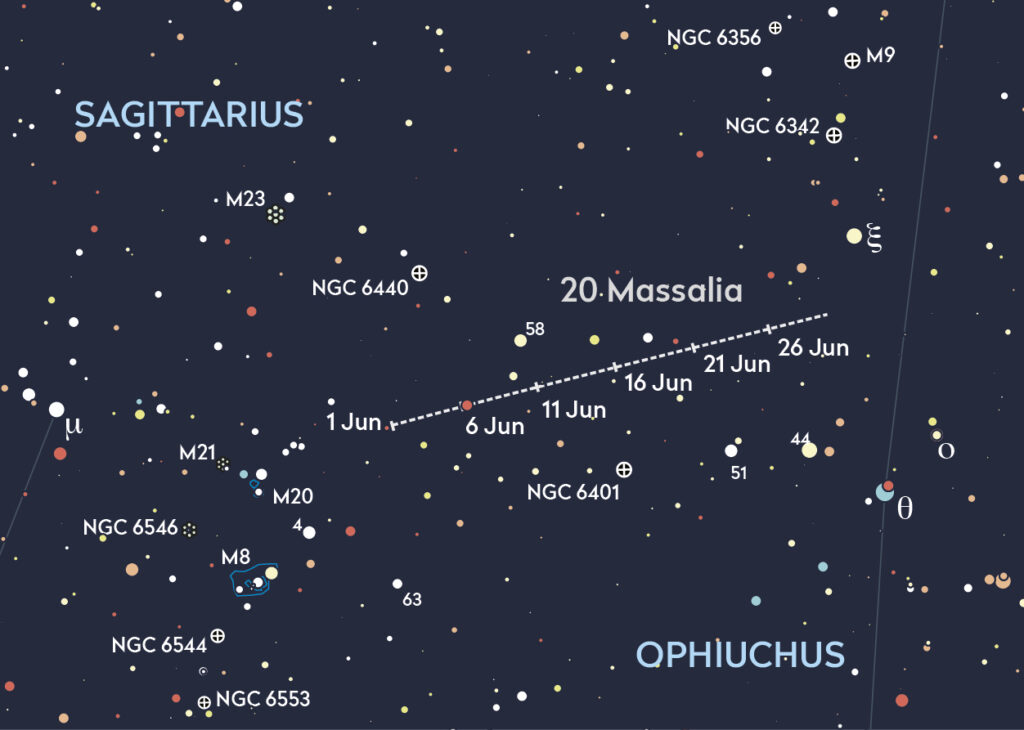Track 20 Massalia, the heftiest member of an inner-belt family of asteroids, as it reaches opposition

Minor planet 20 Massalia reaches opposition on 16 June, when it will be in the southeast corner of Ophiuchus, northwest of the distinctive Teapot asterism in Sagittarius. At the start of June, it’s positioned 2.5° west of the beautiful Trifid Nebula, M20. The Trifid shines with an integrated magnitude of +6.3, although at 28 arcminutes across its surface brightness is significantly lower. The Trifid lies 1.5° north and slightly west of the much brighter Lagoon Nebula, M8. If you fancy recording the passage of 20 Massalia this month, including this pair of iconic nebulae will make for an impressive record of its journey. Incidentally, if you’re reading this in time, at 01:00 BST (00:00 UT) on 20 May, shining at mag. +10.7, Massalia is located 0.4° north of M20.
Massalia tracks west throughout the month, crossing the border into Ophiuchus on 10 June. It starts at mag. +10.5, brightening slightly to +10.0 at opposition when it will be located 0.7° east-southeast of mag. +6.5 52 Ophiuchi. At 01:00 BST (00:00 UT) on 30 June, 20 Massalia will be 1.3° southeast of mag. +4.4 Xi (ξ) Ophiuchi.
Massalia’s orbit keeps it within the inner part of the main asteroid belt. It’s the parent of a large collection of asteroids known as the Massalia family, a group with 6,000+ members. Massalia is a large S-type or stony asteroid with a mean diameter of 145km. Its orbital period is three years, nine months and its mean distance from the Sun is 2.41 AU (361,000,000km). Its orbit takes it out as far as 2.75 AU and in as close as 2.07 AU. It is believed to be nearly spherical in shape, having triaxial ellipsoidal dimensions of 160 x 145 x 132km. It is suspected to have large, flat surface regions and rotates once every 8.1 hours.